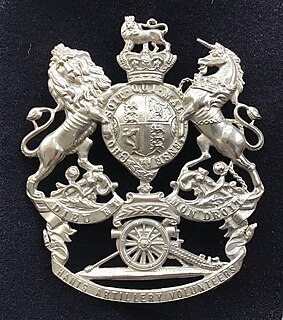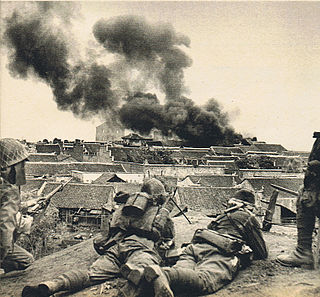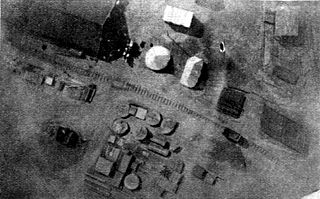 W
WThe 5th Battalion, King's Regiment (Liverpool) was a volunteer unit of the King's Regiment (Liverpool) of the British Army, part of the Territorial Force (TF).
 W
WThe 1st Hampshire Artillery Volunteers and its successors were part-time coast defence units of the British Army from 1860 to 1967. Although the units saw no action, they protected the Portsmouth area in both World Wars and supplied trained gunners to siege batteries engaged on the Western Front during World War I. The unit continued in the Territorial Army after World War II.
 W
WThe 6th Division was an infantry division in the Imperial Japanese Army. Its call sign was the Bright Division .
 W
W25th Cyclist Battalion was a bicycle battalion of the London Regiment of the British Army. The battalion was disbanded in 1922.
 W
WThe 27th Mountain Infantry Brigade is a mountain infantry formation of the French Army. It is heir to the traditions of the 27th Alpine Division FFI, created in September 1944, renamed the 27th Alpine Infantry Division in December 1944, the 27th Alpine Brigade in December 1962, the 27th Alpine Division in August 1976, and then the 27th division d'infanterie de montagne in July 1994. With the end of conscription, all of the French Army's divisions were downsized and the 27th became a brigade in 1999.
 W
WThe 131st Infantry Brigade, originally the Surrey Brigade was an infantry formation of Britain's Territorial Army that saw service during both the First and the Second World Wars. In the First World War the brigade was in British India for most of the war and did not see service as a complete unit but many of its battalions would see service in the Middle East.
 W
WThe Artillery School was the training establishment of the Arm of Artillery of the Italian Army.
 W
WThe Essex Brigade, later 161st Brigade and 161st Infantry Brigade, was a volunteer infantry formation of the British Army in existence from 1888 until 1941, and again from 1947. It served at Gallipoli and in Palestine during the First World War and returned to Egypt in the early part of the Second World War before transferring to the British Indian Army and redesignated 161st Indian Infantry Brigade. In peacetime and during the wars the brigade was an integral part of the 54th Infantry Division and contained mostly battalions of the Essex Regiment.
 W
WThe 127th (Manchester) Brigade was an infantry brigade of the British Army that saw active service during both the First and Second World Wars. It was assigned to the 42nd Division and served in the Middle East and on the Western Front in the First World War.
 W
WThe Musique de l'Arme Blindée Cavalerie (M-ABC) is a military band of the French Army's Armored Branch. It is stationed in Montigny-lès-Metz. It is under the immediate command of the Army Music Command, of which it is one of six bands. It is under the operational command of the 4th Hussar Regiment. It has taken part in events such as the Saumur International Festival of Military Bands and the Spasskaya Tower Military Music Festival and Tattoo. In the latter performance in Moscow, it performed with the Fanfare de l'Ecole d'Application de l'Artillerie and singer Mireille Mathieu. It has also performed in other countries like China, Turkey, and Hungary. It has 40 musicians that consist of a large wind band and various small ensembles.
 W
WThe Parachute Band is a Toulouse-based military band of the French Army. It is stationed in the Balma District of Toulouse. Composed of 55 musicians, in consists of all professional musicians under a chief music director. Its field of action represents 20 departments across the Aquitaine, Midi-Pyrénées, Limousin and Poitou-Charentes regions. It is administratively attached to the 11th Parachute Brigade.
 W
WThe Queen's Own Oxfordshire Hussars was the designated name of a Yeomanry regiment of the British Army formed in 1794. It saw service in the Second Boer War with 40 and 59 Companies of the Imperial Yeomanry and also served in Belgium and France during the Great War. In 1922, the regiment became part of the Royal Artillery. The lineage is maintained by 142 Vehicle Squadron Royal Logistic Corps.
 W
WThe Royal Army Service Corps (RASC) was a corps of the British Army responsible for land, coastal and lake transport, air despatch, barracks administration, the Army Fire Service, staffing headquarters' units, supply of food, water, fuel and domestic materials such as clothing, furniture and stationery and the supply of technical and military equipment. In 1965 its functions were divided between other Corps and the RASC ceased to exist; subsequently, in 1993, they in their turn became the "Forming Corps" of the Royal Logistic Corps.
 W
WThe School of Ballooning was a training and test centre for British Army experiments with balloons and airships. It was established at Chatham in Kent in 1888. The School moved to Stanhope Lines, Aldershot in 1890 when a balloon section and depot were formed as permanent units of the Royal Engineers establishment. The School was sometimes known as the Balloon Factory.
 W
WThe 155th Brigade was an infantry brigade of the British Army that saw active service in both World War I and World War II. Assigned to the 52nd (Lowland) Division, the brigade saw active service in the Middle East and on the Western Front during the First World War. During the Second World War, now the 155th Infantry Brigade, it continued to serve with the 52nd Division in Operation Dynamo, and later in North-western Europe from late 1944 until May 1945.